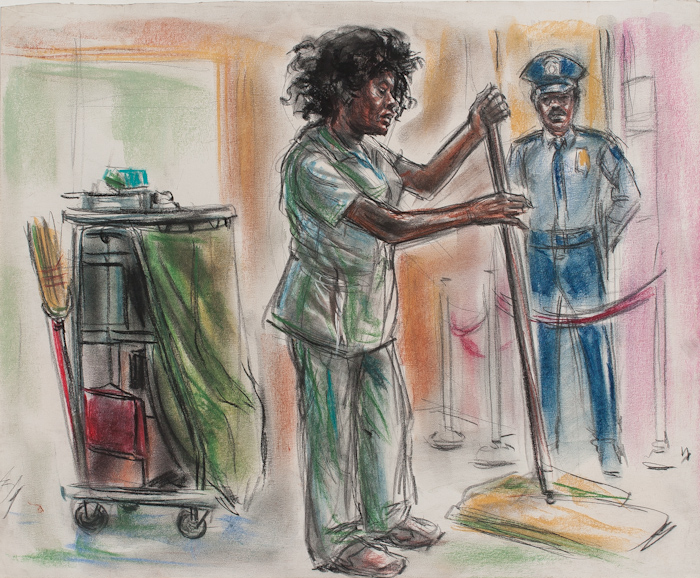Are the courtroom portraits of Donald Trump and Stormy Daniels accurate? It appears that the art of courtroom illustration may have declined since its high point in the early 1970s when the Watergate trials were must-see television, and cameras were universally prohibited in America’s courthouses.
Today only New York and Louisiana prohibit cameras, and courtroom artists have limited opportunities to perfect their skills. The hush money trial of Donald Trump has once again put these artists into the spotlight, but so far, judging by online commentary, the results have been disappointing at best.
It’s well-worth comparing the drawings we now see on television with Freda Reiter’s pastel sketches of the Watergate trials. She made hundreds of them over a two-year period from 1973 to 1975, all for broadcast on ABC-TV. Reiter’s skills as a portraitist are evident, as is her eye for facial expressions and gestures that capture the personalities of key figures, as well as, her use of color to convey the heightened mood in the courtroom. But do her drawings capture the truth about Watergate?
Despite the presumption of objectivity, Reiter’s sketches do betray a point of view. As the prosecution closed in, and Nixon’s approval rating continued to sink, the trial took the form of a suspenseful television drama, with its heroes and villains. One need only compare Reiter’s depictions of prosecution witness John Dean (youthful and stoic) and defendant John Ehrlichman (wrinkled and snarling) to capture her take on the proceedings.
Gallery 98 has a large collection of Reiter’s Watergate sketches available for viewing and purchase.













